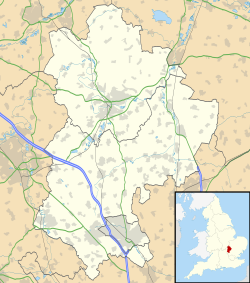| Flitwick Castle | |
|---|---|
| Flitwick, Bedfordshire, England | |
 Flitwick Castle earthworks, 2007 | |
| Site information | |
| Type | Castle |
| Condition | Earthworks |
| Location | |
Shown within Bedfordshire | |
| Coordinates | 51°59′51″N0°30′18″W / 51.99752°N 0.50490°W |
| Grid reference | grid reference TL02723428 |
Flitwick Castle was an 11th-century castle located in the town of Flitwick, in the county of Bedfordshire, England. It now exists only as ruins, reduced to little but an earth mound.
Contents
It was a small, timber Motte-and-bailey castle, surrounded by a moat. The castle was mentioned in the Domesday Book, in 1086, as being under the ownership of William Lovet, a Norman. Lovet had displaced Alwin, who had been the Saxon owner of Flitwick prior to the Norman Conquest. [1]
The earthwork remains of the castle are on what is now a public green space known as Temple Field or Mount Hill. The ditches have been filled in and the mound is now about 7 m (20 ft) high. [2] The name Temple Field takes its name from the nearby church. [1] The site is a Scheduled Monument.
